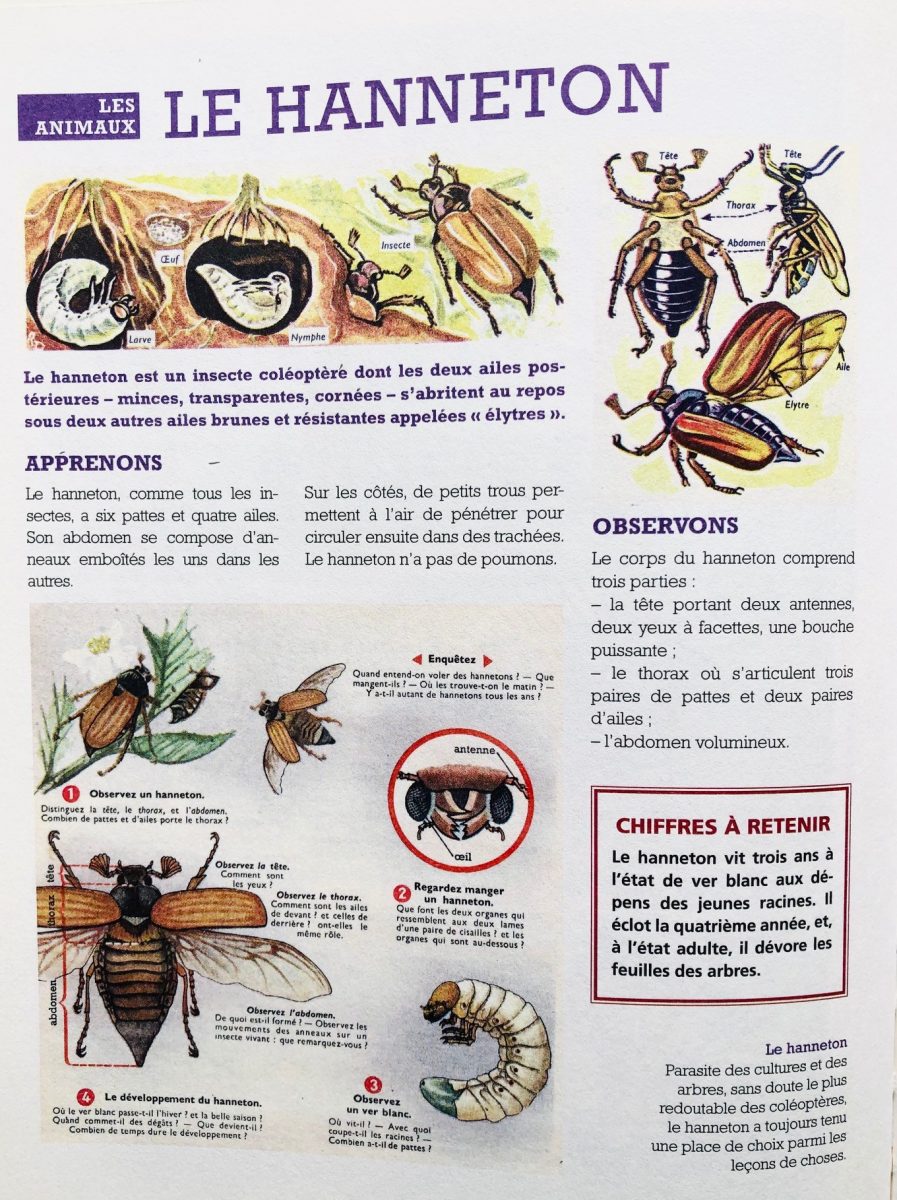(nur auf Englisch)
It is amazing to learn and discover constantly, creating invisible links. Indeed, it opens the opportunity to witness and identify all that was part of the unknown world before. It implies to expand your own knowledge and go through metamorphosis just like the insects. It is like softly crossing the frontiers of the secrets of life.
Being able to identify the harmless rose chafer grub and the unsociable cockchafer is not a usual exercise and seems to be possible only for specialists.
![]()
The head of the cockchafer, its eyes, and especially its antennae with mobile lamellae are remarkable organs ![]()
The cockchafer in flight: its elytra and finely ribbed wings help to lift this imposing 3 cm insect. Watercolour by Emmanuelle Tchoukriel
However, with some easy training, you might be able to identify these two beetles with apparently similar characteristics but radically different in their behaviours (see the previous article on the rose chafer grub).
The cockchafer * can be observed in a three-year cycle, from May onwards. It is dreaded by gardeners and farmers because it has the habit to eat leaves and roots.
Very different from the elegant and harmless rose chafer, the cockchafer has really bad eating habits and haunts any citizen trying to grow a garden.
Picture on the right: a page about the cockchafer from the Lessons of Things taught in primary school in the 1950’s.
The cockchafer still can be seen, but it is by no means comparable to the large colonies of a time when, during hot summer nights, children would attach the legs of the cockchafer with wires to watch their abilities to rotate.
This nocturnal animal appears in groups of hungry whirring adults, searching for tender leaves in fruit trees and forests.
The freshly emerged female quickly feeds on the foliage before mating and “surprisingly” returning to her birthplace to lay eggs in the depth of loose, warm soil.
A month later, a white grub hatches and greedily eat the nutrient parts of the plants around which quickly die off, thanks to its strong pinching mandibles.
At the end of its growth period, it burrows into a shell made of a mixture of saliva and humus.
In this shelter, it growth to the size and shape of a 3 cm long cockchafer, with a short life span of 30 days, thus ending its 3 year odyssey.
Its superbly developed sense organ is located on the mobile lamellae of its 2 antennae (6 lamellae for the female, 7 longer for the male).
![]()
The little owl (Claudine), pecks on large quantities of cockchafer grubs to feed its young. It is a valuable predator that regulates the proliferation of the species. ![]()
The hedgehog is also a predator of the cockchafer grub.
Some predators hunt the cockchafer grubs: moles, blackbirds, hedgehogs, bats, and more especially the little owl of 65 grams, named Claudine, which likes to feast on cockchafers. (source: n°105 – La Hulotte).
Paradoxically, there is a tiny worm (the nematode) used in organic farming that parasitizes the large cockchafer grub, which will eventually die.
In the 15th century, the church got involved, threatening the species with excommunication because of its bad impact, causing famines.
White grubs (called “hens fattening”) hunting would take place, bringing poultry in the fields after ploughing.
Incentives were given for “white grubs hunting”, which consisted in catching the beetles on trees (300 million were caught in 1835 in the Sarthe region).
In the early 1960’s, the cockchafer has become rare as it has been destroyed by chemicals. As a consequence, its predators started to disappear too, as it is difficult to avoid because of the fragile links in the food chain.
A smaller beetle still can be seen in our region: the Saint Jean beetle.
Some popular French expressions reveal a strong anchoring of the animal in the language, like “not damaged by cockchafer” (something excellent) or “dizzy as a chafer” (which bumps into everything).
According to the entomologist Jean-Henri Fabre, the insect reveals a new world to us, as if we were meeting people from another planet. This is a feeling you might have in the next article.
*Jules Renard (Histoires Naturelles)
With the authorization of l’Est Eclair / Libération Champagne
Text and photos : Yves Meurville, featured and headphoto © MKoziol






